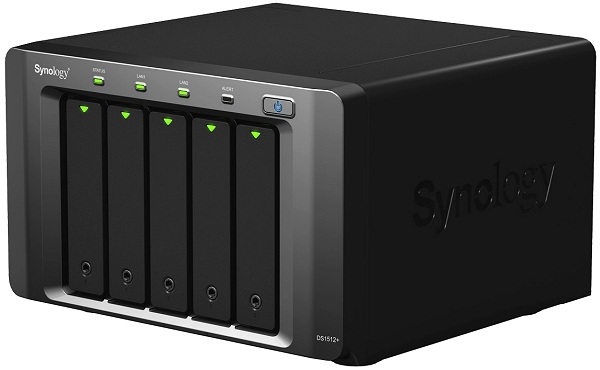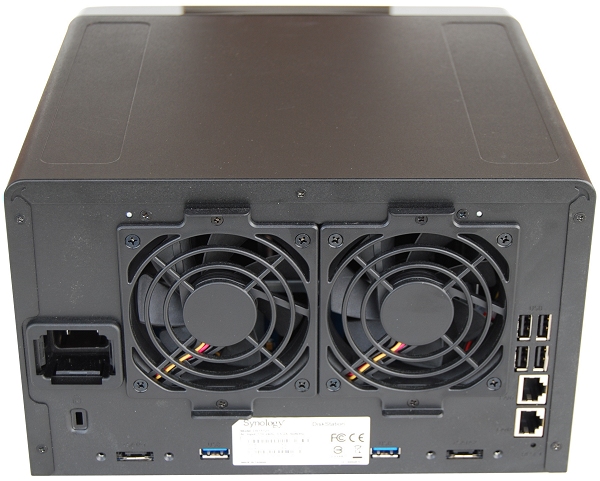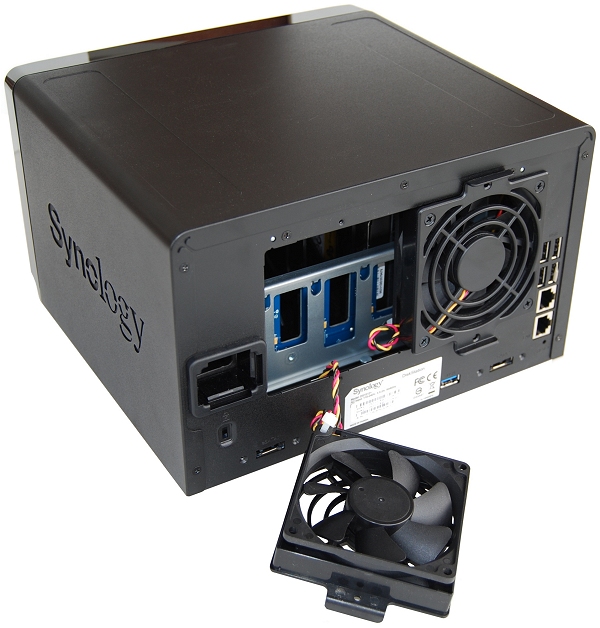Synology made significant upgrades to its high-end small and medium business product range last year, adding the 5-bay DS1511+ and 12-bay DS2411+ to counter the competition's products in the sub-$1,000 to $2,000 range. Despite being nearly a year old and as expensive as ever at $800 and $2,000 (that's without storage drives), the DS1511+ and DS2411+ are still very solid and relevant in today's market.
Both devices have dual-Gigabit LAN controllers for Link Aggregation, offering a read speed of over 190MB/s. They also tout hot-swappable SATA bays, as well as the ability to significantly boost storage using the DX510 and DX1211 expansion units, which can allow the DS1511+ to support up to 15 drives for a maximum capacity of 45TB, while the expanded DS2411+ supports up to 15 drives for 72TB.
Again, if you're shopping for a dedicated network-attached storage box, you can't really go wrong with either unit. Both are still quite sound in terms of technical specifications – unless you need USB 3.0, which is rapidly becoming a standard feature for NAS devices. As such, Synology has upgraded the 5-bay DS1511+ with the latest USB standard and it's taken the opportunity to polish some other specs too.

Known as the DS1512+, the revamped 5-bay device boasts read and write speeds of 200.31MB/s and 194.83MB/s, up from the DS1511+'s quoted rates of 197.8MB/s and 165.91MB/s. Additionally, the dual core 2.13GHz Intel Atom D2700 (32nm Cedar Trail) should provide a little more oomph than the dated 1.8GHz Atom D525 (45nm Pineview), while redesigned hardware includes a new cooling system.
These extras come at a reasonable $100 premium over last year's DS1511+, which should position the DS1512+ as a respectable contender in the current NAS market – or so the spec sheets would have us believe. Let's take a closer look at the hardware and software (including the recently released DiskStation Manger 4.0) before we greet Synology's latest offering with our usual array of benchmarks.
The DS1512+ uses the same design introduced by the DS1010+, which happens to be our favorite NAS design to date as it combines professional looks with practical functionality.
The 5-bay device measures 233mm long, 248mm wide, and 157mm tall, and it's quite heavy when empty at 4.25kg (9.36lbs) – a figure that's bound to climb as you add storage. The front has five hot-swappable drive bays, each with their own green activity light at the top.


Synology has integrated a small key hole into the bottom of each drive tray that lets you lock individual drives. This implementation is more attractive than you'll find on other NAS devices.
Once unlocked, the bays release with a simple press. Sliding drives in and out of the DS1512+ is a breeze.
Directly above the hot-swappable drive bays are four more activity LEDs that indicate status, LAN1, LAN2 and alert. There is also a bright blue LED integrated into the power button which indicates that the unit is active.


Spinning around to the back reveals a pair of 80mm fans, dual Gigabit LAN ports, four USB 2.0 ports, two USB 3.0 ports, two eSATA ports for connecting up to two DX510 units and a 3-pin power connector.
Synology has upgraded the cooling of the DS1512+ to include detachable fans, which should make them easier to replace if they fail.
As mentioned, the eSATA ports can be used to connect the DS1512+ to one or two DX510 expansion enclosures, adding 10 more bays to the base configuration. The dual Gigabit LAN ports are used to achieve the claimed 200.31MB/s read and 194.83MB/s write performance. They do this by using Link Aggregation technology, which allows grouping several physical Ethernet links to create one logical Ethernet link for the purpose of providing fault-tolerance and high-speed links between switches, routers, servers and in this case, the Synology DS1512+.

Whereas lower-end models such as the DS712+ feature front panel connectivity, Synology tends to exclude this feature on their more expensive models for whatever reason. This is the case with the DS1512+, which features no form of front panel connectivity. This means quick copying from external media must be done from the rear of the unit, a potential inconvenience for some users.
